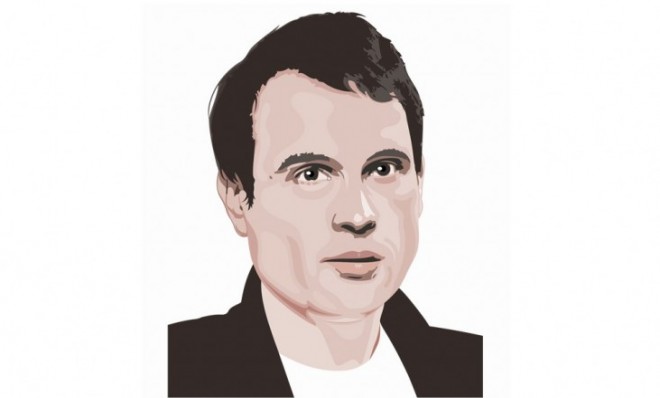We are all Nate Silvers
Inside the debate about political prognostication


While Hurricane Sandy rages through the East Coast, the political class, having exhausted our speculation about whether a storm helps or hurts (Romney, Obama, 2016 candidates, early voting) has turned once again to a nice young idea entrepreneur who makes his home at The New York Times. Nate Silver, proprietor of the 538 website, has become a polarizing figure for some and the ultimate source of comfort for others. Not twice in the past two days has a liberal friend emailed me seeking reassurance that Nate Silver's election forecasts are really accurate, right?
For some people, it's the fact that Silver's forecasts (he gives Obama a 75 percent chance of winning right now) haven't reflected the Mitt-mentum after the first debate. More on that in the second. The charge is that maybe Silver is just a biased Democrat who is using his Times platform to peddle false hope.
A Moneyball-style debate has broken out among political class elders, who think that Silver just doesn't understand how politics works. He doesn't hear the crack of a bat the way that other non-mathematical prognosticators do. He doesn't have a feel for the game. He hasn't been on the campaign trail much and doesn't speak very often to non-pollsters.
The Week
Escape your echo chamber. Get the facts behind the news, plus analysis from multiple perspectives.

Sign up for The Week's Free Newsletters
From our morning news briefing to a weekly Good News Newsletter, get the best of The Week delivered directly to your inbox.
From our morning news briefing to a weekly Good News Newsletter, get the best of The Week delivered directly to your inbox.
Also, a bunch of people are jealous. Silver has become a celebrity. He has a fat book contract. He's making the rounds of the shows that liberals love to love. People are listening to him, and not listening to them.
Here is my take on Silver.
1. As a Bayesian, his mind works in a way that assesses probability in a counter-intuitive way. His models account for both the base rates of a particular occurrence — what is the likelihood that a Republican could win a certain state by X many points given a bounded set of historical data — and factors it into his equations, which of course include more general data, like polling averages.
2. No one, not even Nate Silver, believes that you can predict the course of an election based on statistics. For one thing, elections are an amalgam of a trillion tiny choices, many of them contingent on random noise, and others that are simply immeasurable. For another, the "n," or amount of comparable data for past elections, is relatively small, and often the data are themselves subject to intense sociological cross-pressures that aren't reliable.
A free daily email with the biggest news stories of the day – and the best features from TheWeek.com
3. The basic way to read Silver, or any one polling expert's take on the election, is to accept it on its face. It is a good guess. It accounts for a lot of things that few of us have time to look at. It puts a numerical value on some stuff that generally resides within the guts of political reporters, which makes us very uncomfortable.
But the truth is, every time WE make a prediction, we are doing what Nate Silver does, except we're using the quantum computer that is our brain, the data we've crunched is not conscious to us, and we use metaphors and descriptive language, rather than math, to express what amounts to a guess based on past probabilities.
In other words, we are all Nate Silvers.
Marc Ambinder is TheWeek.com's editor-at-large. He is the author, with D.B. Grady, of The Command and Deep State: Inside the Government Secrecy Industry. Marc is also a contributing editor for The Atlantic and GQ. Formerly, he served as White House correspondent for National Journal, chief political consultant for CBS News, and politics editor at The Atlantic. Marc is a 2001 graduate of Harvard. He is married to Michael Park, a corporate strategy consultant, and lives in Los Angeles.
-
 Why Puerto Rico is starving
Why Puerto Rico is starvingThe Explainer Thanks to poor policy design, congressional dithering, and a hostile White House, hundreds of thousands of the most vulnerable Puerto Ricans are about to go hungry
-
 Why on Earth does the Olympics still refer to hundreds of athletes as 'ladies'?
Why on Earth does the Olympics still refer to hundreds of athletes as 'ladies'?The Explainer Stop it. Just stop.
-
 How to ride out the apocalypse in a big city
How to ride out the apocalypse in a big cityThe Explainer So you live in a city and don't want to die a fiery death ...
-
 Puerto Rico, lost in limbo
Puerto Rico, lost in limboThe Explainer Puerto Ricans are Americans, but have a vague legal status that will impair the island's recovery
-
 American barbarism
American barbarismThe Explainer What the Las Vegas massacre reveals about the veneer of our civilization
-
 Welfare's customer service problem
Welfare's customer service problemThe Explainer Its intentionally mean bureaucracy is crushing poor Americans
-
 Nothing about 'blood and soil' is American
Nothing about 'blood and soil' is AmericanThe Explainer Here's what the vile neo-Nazi slogan really means
-
 Don't let cell phones ruin America's national parks
Don't let cell phones ruin America's national parksThe Explainer As John Muir wrote, "Only by going alone in silence ... can one truly get into the heart of the wilderness"



